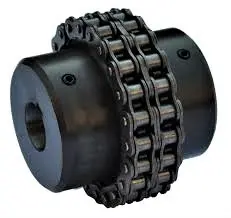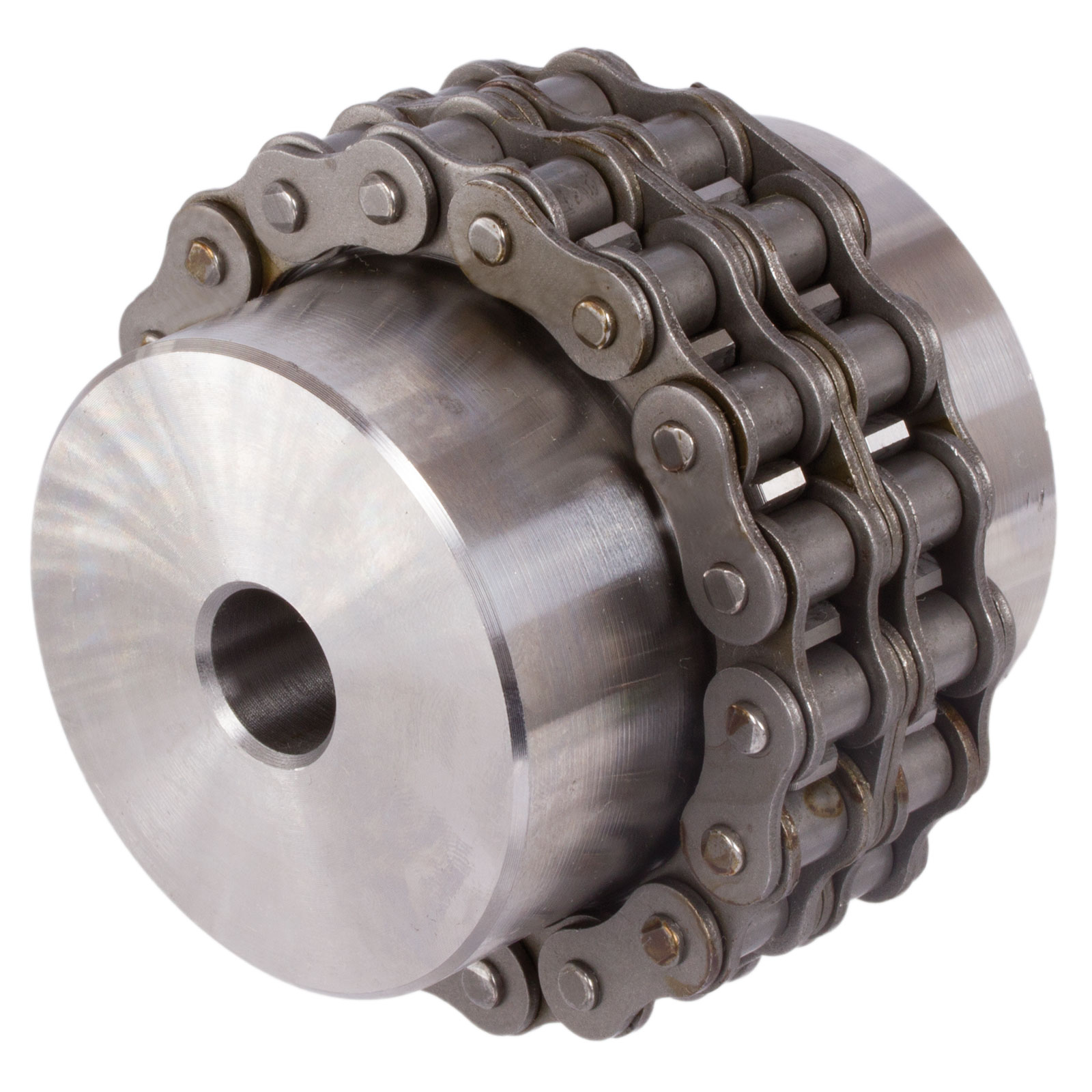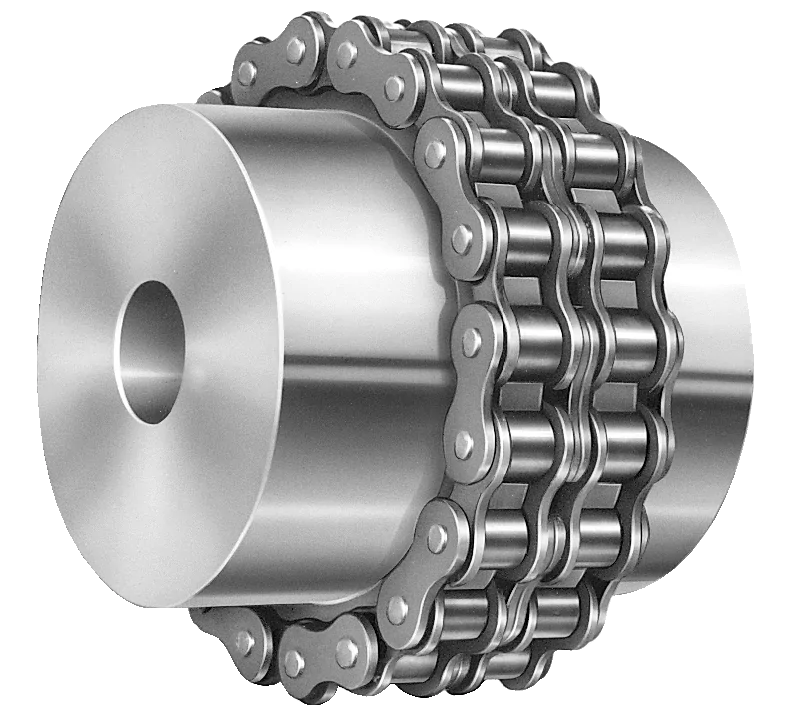Product Description
Flexible.
Compact size has powerful transmission capacity.
Metal-built.
Easy-mount-and-demount.
| MODEL NO. |
BORE DIA | D | DH | L | I | S | MAX. TORQUE |
WEIGHT | SHELL | |||
| MIN. | MAX. | A | B | WEIGHT | ||||||||
| mm | mm | mm | mm | mm | mm | mm | kN.m | kg | kg | |||
| CHC3812 | 9.50 | 16.00 | 45.00 | 25.00 | 64.90 | 30.00 | 4.90 | 0.249 | 0.3 | 61.00 | 57.00 | 0.1 |
| CHC4012 | 11.00 | 22.00 | 61.00 | 35.00 | 79.40 | 36.00 | 7.40 | 0.329 | 0.8 | 75.00 | 75.00 | 0.2 |
| CHC4016 | 15.00 | 30.00 | 77.00 | 50.00 | 79.40 | 36.00 | 7.40 | 0.419 | 1.4 | 92.00 | 75.00 | 0.3 |
| CHC5016 | 15.00 | 38.00 | 96.00 | 60.00 | 99.70 | 45.00 | 9.70 | 0.791 | 2.6 | 111.00 | 85.00 | 0.6 |
| CHC5018 | 19.00 | 45.00 | 106.00 | 70.00 | 99.70 | 45.00 | 9.70 | 0.979 | 3.5 | 123.00 | 85.00 | 0.8 |
| CHC6018 | 22.00 | 55.00 | 127.00 | 85.00 | 119.50 | 54.00 | 11.50 | 1.810 | 6.0 | 142.00 | 106.00 | 1.2 |
| CHC6571 | 25.00 | 75.00 | 151.00 | 110.00 | 119.50 | 54.00 | 11.50 | 2.610 | 9.5 | 167.00 | 106.00 | 1.6 |
| CHC8018 | 30.00 | 78.00 | 169.00 | 115.00 | 149.20 | 67.00 | 15.20 | 3.920 | 14.0 | 186.00 | 130.00 | 2.5 |
| CHC8571 | 35.00 | 95.00 | 202.00 | 140.00 | 146.20 | 67.00 | 15.20 | 5.640 | 20.0 | 220.00 | 130.00 | 2.7 |
| CHC1571 | 38.00 | 110.00 | 232.00 | 160.00 | 200.80 | 91.00 | 18.80 | 8.400 | 34.0 | 248.00 | 144.00 | 3.0 |
| CHC12018 | 48.00 | 120.00 | 254.00 | 170.00 | 260.80 | 119.00 | 22.80 | 12.700 | 50.0 | 309.00 | 185.00 | 7.2 |
| CHC12571 | 58.00 | 150.00 | 302.00 | 210.00 | 260.80 | 119.00 | 22.80 | 18.300 | 65.0 | 357.00 | 185.00 | 9.0 |
| CHC16018 | 68.00 | 160.00 | 341.00 | 220.00 | 360.10 | 165.00 | 30.10 | 26.400 | 122.0 | 402.00 | 240.00 | 9.6 |
| CHC16571 | 78.00 | 200.00 | 405.00 | 280.00 | 360.10 | 165.00 | 30.10 | 38.100 | 185.0 | 466.00 | 240.00 | 16.3 |
| CHC20018 | 88.00 | 205.00 | 424.00 | 295.00 | 519.60 | 241.00 | 37.60 | 54.100 | 288.0 | 490.00 | 270.00 | 19.0 |
| CHC20571 | 98.00 | 260.00 | 505.00 | 375.00 | 519.60 | 241.00 | 37.60 | 77.800 | 334.0 | 570.00 | 270.00 | 25.0 |

Real-World Examples of Successful Roller Chain Coupling Installations and Benefits
1. Industrial Conveyor Systems:
Roller chain couplings are widely used in industrial conveyor systems to transmit power between the driving and driven shafts. They provide reliable torque transmission and can accommodate misalignments, ensuring smooth and efficient operation of the conveyor. The benefits include reduced downtime due to their robustness and the ability to handle heavy loads in demanding environments.
2. Heavy Machinery Applications:
In heavy machinery such as mining equipment, steel mills, and large cranes, roller chain couplings play a crucial role in transmitting power from the motor to various mechanical components. The ability to withstand high torque and shock loads ensures the safe and efficient operation of these machines. Roller chain couplings’ durability reduces maintenance requirements and enhances overall system reliability.
3. Pumping Systems:
Roller chain couplings are used in pumping systems for various industries, including water treatment, oil and gas, and chemical processing. They offer the advantage of absorbing vibration and shock loads, contributing to the smooth and continuous operation of pumps. Their flexibility allows them to compensate for any misalignment between the motor and pump shafts, reducing stress on the equipment and increasing its lifespan.
4. Paper and Pulp Industry:
In the paper and pulp industry, roller chain couplings are employed in various applications, including paper machines and pulp processing equipment. Their ability to handle high-speed and high-torque requirements makes them suitable for demanding tasks. Roller chain couplings contribute to reduced maintenance costs and improved productivity by ensuring efficient power transmission in critical processes.
5. Automotive Manufacturing:
Automotive manufacturing plants use roller chain couplings in assembly line machinery and robotic systems. The couplings help in providing precise power transmission, ensuring accurate and synchronized movement of equipment. This results in improved production efficiency and reduced downtime, leading to cost savings and enhanced manufacturing output.
Overall, roller chain couplings have demonstrated their effectiveness and versatility across various industries. Their ability to handle misalignments, shock loads, and high torque makes them an excellent choice for demanding applications where reliability and efficiency are critical.
“`
Materials Used in Manufacturing Roller Chain Couplings
Roller chain couplings are typically constructed from high-quality materials to ensure durability and reliable performance. The most common materials used in their manufacturing include:
- Steel: Steel is a popular choice for roller chain couplings due to its excellent strength and resistance to wear. It can handle high torque and speed requirements, making it suitable for a wide range of industrial applications.
- Stainless Steel: Stainless steel is used when corrosion resistance is required. It is often employed in industries where the coupling is exposed to moisture, chemicals, or harsh environmental conditions.
- Cast Iron: Cast iron is known for its robustness and excellent heat dissipation properties. It is commonly used in applications where shock absorption and reduced vibrations are essential.
- Aluminum: Aluminum is a lightweight material that offers good strength-to-weight ratio. It is commonly used in applications where reducing the overall weight of the system is critical.
- Nickel-Plated: Nickel-plated roller chain couplings provide enhanced corrosion resistance, making them suitable for applications in challenging environments.
When selecting a roller chain coupling, it is essential to consider the specific requirements of the application, including torque, speed, environment, and potential exposure to corrosive substances. Choosing the right material ensures the coupling’s longevity and efficient power transmission in the intended operating conditions.

What are the Different Types of Roller Chain Couplings Used in Various Industrial Applications?
Roller chain couplings come in several variations to suit different industrial applications. The main types of roller chain couplings include:
- Standard Roller Chain Couplings: These are the most common type of roller chain couplings, featuring two sprockets of the same size connected by a standard roller chain. They are used in general power transmission applications and are suitable for moderate torque requirements.
- Heavy-Duty Roller Chain Couplings: As the name suggests, these couplings are designed for heavy-duty applications that require higher torque capacity. They typically have larger and stronger sprockets and chains to handle increased loads.
- Double Roller Chain Couplings: This type of coupling includes two roller chains side by side on each sprocket. It offers higher torque transmission capabilities and increased redundancy for critical applications.
- Idler Roller Chain Couplings: In this design, an idler sprocket is added between the driving and driven sprockets. It helps to reduce the impact of shock loads and misalignment on the coupling.
- Spacer Roller Chain Couplings: These couplings have a spacer between the two sprockets, allowing for larger axial misalignment while maintaining torque transmission.
The choice of the roller chain coupling type depends on the specific requirements of the application, including torque, speed, misalignment, and environmental factors. Engineers and designers need to select the appropriate type of coupling to ensure reliable and efficient power transmission in their industrial machinery.


editor by CX 2023-08-21